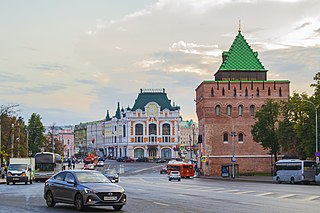
Nizhny Novgorod is the administrative centre of Nizhny Novgorod Oblast and the Volga Federal District in Russia. The city is located at the confluence of the Oka and the Volga rivers in Central Russia, with a population of over 1.2 million residents, up to roughly 1.7 million residents in the urban agglomeration. Nizhny Novgorod is the sixth-largest city in Russia, the second-most populous city on the Volga, as well as the Volga Federal District. It is an important economic, transportation, scientific, educational and cultural centre in Russia and the vast Volga-Vyatka economic region, and is the main centre of river tourism in Russia. In the historic part of the city there are many universities, theatres, museums and churches.
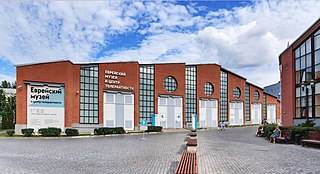
The history of the Jews in Russia and areas historically connected with it goes back at least 1,500 years. Jews in Russia have historically constituted a large religious and ethnic diaspora; the Russian Empire at one time hosted the largest population of Jews in the world. Within these territories, the primarily Ashkenazi Jewish communities of many different areas flourished and developed many of modern Judaism's most distinctive theological and cultural traditions, while also facing periods of antisemitic discriminatory policies and persecution, including violent pogroms. Some have described a "renaissance" in the Jewish community inside Russia since the beginning of the 21st century; however, the Russian Jewish population has experienced precipitous decline since the dissolution of the USSR which continues to this day, although it is still among the largest in Europe.

Nizhny Novgorod Oblast is a federal subject of Russia. Its administrative center is the city of Nizhny Novgorod. It has a population of 3,119,115 as of the 2021 Census. From 1932 to 1990 it was known as Gorky Oblast.

Bukharan Jews, in modern times called Bukharian Jews, are the Mizrahi Jewish sub-group of Central Asia that historically spoke Bukharian, a Judeo-Persian dialect of the Tajik language, in turn a variety of the Persian language. Their name comes from the former Central Asian Emirate of Bukhara, which once had a sizable Jewish population. Bukharan Jews are of Persian-Jewish ancestry, though they are considered one of the oldest ethno-religious groups of Central Asia and over the centuries developed their own distinct customs.
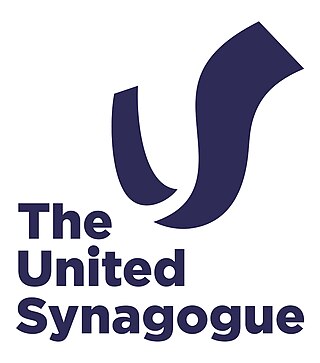
The United Synagogue (US) is a union of British Orthodox Jewish synagogues, representing the central Orthodox movement in Judaism. With 56 congregations comprising 36,000+ members, it is the largest synagogue body in Europe. The spiritual head of the union is the Chief Rabbi of the United Hebrew Congregations of the Commonwealth – a title that bears some formal recognition by the Crown.

The history of the Jews in Ukraine dates back over a thousand years; Jewish communities have existed in the modern territory of Ukraine from the time of the Kievan Rus'. Important Jewish religious and cultural movements, from Hasidism to Zionism, arose there. According to the World Jewish Congress, the Jewish community in Ukraine constitutes Europe's third-largest and the world's fifth-largest.

The history of Jews in Estonia starts with reports of the presence of individual Jews in what is now Estonia from as early as the 14th century.

The history of the Jews in Latvia dates back to the first Jewish colony established in Piltene in 1571. Jews contributed to Latvia's development until the Northern War (1700–1721), which decimated Latvia's population. The Jewish community reestablished itself in the 18th century, mainly through an influx from Prussia, and came to play a principal role in the economic life of Latvia.

The history of the Jews in Luxembourg dates back to the 1200s. There are roughly 1,200 Jews in Luxembourg, and Jews form one of the largest and most important religious and ethnic minority communities in Luxembourg historically.

The Liberal Jewish Synagogue, abbreviated as LJS, is a Liberal Jewish congregation and synagogue, located in St John's Wood, in the City of Westminster, London, England, in the United Kingdom.
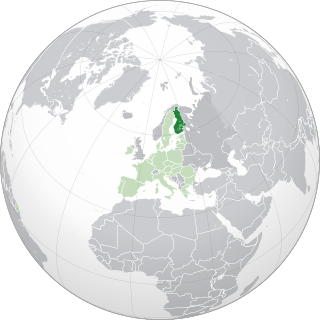
The history of the Jews in Finland goes back to the late 18th century. Many of the first Jews to arrive were nineteenth-century Russian soldiers who stayed in Finland after their military service ended. The two synagogues in active use today in Finland were built by Jewish congregations in Helsinki and Turku in 1906 and 1912, respectively. The Vyborg Synagogue was destroyed by Russian air bombings on 30 November 1939, the first day of the Winter War. Today, Finland is home to around 1,800 Jews, of which 1,400 live in the Greater Helsinki area and 200 in Turku. Finnish and Swedish are the most common mother tongues of Jews in Finland, and many also speak Yiddish, German, Russian or Hebrew. Since data collection began in 2008, incidents of antisemitism have been on the rise in Finland. The number of incidents are likely under-reported, as Finland does not have a systematic method for recording specific forms of hate speech that incite violence or hatred.
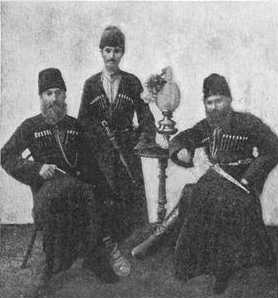
The history of the Jews in Azerbaijan dates back many centuries. Today, Jews in Azerbaijan mainly consist of three distinct groups: Mountain Jews, the most sizable and most ancient group; Ashkenazi Jews, who settled in the area during the late 19th-early 20th centuries, and during World War II; and Georgian Jews who settled mainly in Baku during the early part of the 20th century.

Rabbi Moshe Reuven Azman is an Orthodox rabbi in Kyiv Ukraine.
Adolf Solomonovich Shayevich is a Soviet and Russian Orthodox rabbi who has been the rabbi of the Moscow Choral Synagogue since 1983, which is traditionally regarded as Moscow's main Jewish house of prayer.

The Brodsky Synagogue, also called the Brodsky Choral Synagogue, is an Orthodox Jewish synagogue located in Kyiv, Ukraine.

Australian Jews, or Jewish Australians, are Jews who are Australian citizens or permanent residents of Australia. In the 2021 census there were 99,956 people who identified Judaism as their religious affiliation and 29,113 Australians who identified as Jewish by ancestry, an increase from 97,355 and 25,716, respectively, from the 2016 census. The actual number is almost certainly higher, because being a Jew is not just about being religious, but the census data is based on religious affiliation, so secular Jews often feel it would be inaccurate to answer with "Judaism". Also, since the question is optional, many practising Holocaust survivors and Haredi Jews are believed to prefer not to disclose their religion in the census. By comparison, the Israeli newspaper Haaretz estimated a Jewish-Australian population of 120,000–150,000, while other estimates based on the death rate in the community estimate the size of the community as 250,000, which would make them 1% of the population. Based on the census data, Jewish citizens make up about 0.4% of the Australian population. The Jewish community of Australia is composed mostly of Ashkenazi Jews, though there are Jews in Australia from many other traditions and levels of religious observance and participation in the Jewish community.
The Jewish Community of Nizhny Novgorod contains about 15,000 people. The synagogue within the community is at 5a Gruzinskaya Street.
The history of the Jews in Vienna, Austria, goes back over eight hundred years. There is evidence of a Jewish presence in Vienna from the 12th century onwards.

Nizhny Novgorod Governorate was an administrative-territorial unit (guberniya) of the Russian Empire, Russian Republic, and the Russian SFSR, roughly corresponding to the Upper and Middle Volga region and what is now most of the Nizhny Novgorod Oblast. In the early 20th Century, Nizhny Novgorod Governorate bordered Kostroma and Vyatka governorates to the north, Vladimir Governorate to the west, Kazan and Simbirsk governorates to the east, and Penza with Tambov governorates to the south.

Nizhny Novgorod was founded by Prince Yuri II of Vladimir in 4 February 1221. Citizens organized an army to liberate Moscow from the Poles in 1611, led by Kuzma Minin and Prince Dmitry Pozharsky. During the Russian Empire, in 1817 Nizhny Novgorod became the country's main trading city. In 1896, the city hosted the largest All-Russia exhibition. In the Soviet era, Nizhny Novgorod was renamed Gorky, in honor of the writer Maxim Gorky. Then it was the industrial center of the Soviet Union. During the World War II, the city sent to the front a huge amount of military equipment and ammunition. Therefore, the German air force bombed the city for 3 years. After the dissolution of the Soviet Union, the city was renamed back to Nizhny Novgorod. In Russia, the city became a political center and the capital of the Volga Federal District. Now the city is the center of information technology and develops tourism.

















